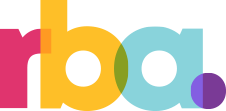Mood Boards: What and Why
- By
- April 6, 2020
- Design
It’s happened to almost every designer. You spend countless hours producing a jaw-dropping comp, or comprehensive layout, only to have it rejected by an Art Director or client because it wasn’t what they were envisioning in their mind. So you’re sent back to the drawing board with both your ego and the budget taking a hit. After this happens, the realization that getting some type of visual idea of the final product at the beginning of the design process makes a huge difference in the outcome of the project.
Visuals communicate things that words cannot. A picture is worth a thousand words and mood boards are a great way to create that picture. Mood boards, also known as “inspiration boards,” are visual tools that communicate our thinking and concepts and turn them into visual ideas. Depending on the project at hand, graphic designers will create a board full of inspiration to bring their idea to life before the actual project begins.
Good vs. Great Work
Mood boards typically consist of photography style, typography, patterns, color palettes, and even samples to convey a general idea or feeling to ensure they are in alignment with the intended vision for the project. Not to be taken too literally though; a mood board is intentionally casual in terms of layout or composition since this isn’t the final product. However, creating a mood board at the beginning of the design process ensures success for the end result and truly makes a difference in good versus great work.
From physical foam boards to digital collages, there are many different ways a mood board can be pieced together. The style a designer chooses is typically based on the time allotted, personal design aesthetic, or even the client’s personality. Throughout this article, you’ll get a glimpse of the different directions ranging in refined templates to loose collages in which mood boards were created by different designers.
Examples
When searching for a brand, your go to is most likely their website and their Instagram. It’s extremely important that the brand has a consistent flow throughout all platforms to continue their brand identity. This can be achieved by creating collage mood boards or a grid with the same color palettes, filters, or fonts that can be overlayed on an image.

Instagram grids are essentially moodboards. When we onboard a new social client we like to show them what their Instagram grid could potentially look like. We make a grid with 9-12 posts that create a cohesive feel and match up with their website, brand guidelines, etc. Doing this is essentially a mood board that helps the client visually understand what we’re able to achieve.

If a client has not worked with many designers or marketing people, or if they’re incredibly detail-oriented, you may want to take a more refined approach. In this style, a template is created to show a variety of different elements separately. For comparison, here are examples of template mood boards from various branding projects:

The refined template takes more of a streamlined approach. A template mood board is likely more beneficial at the start of a branding project since the color palette, patterns, typography and even photography usage are all more explicit. A color palette is defined, font treatments such as the heading and subheading are chosen, even iconography and photography styles are worked in. Therefore, this angle is great for branding especially since you really want the client to focus on each piece of visual language separately to get sign-off before you start designing!
Recap: The Benefits
Less Frustration
Creating mood boards are so fun, they hardly feel like work. Designing mood boards are a great way to brainstorm with different styles and approaches before committing. Most importantly, it will keep design revisions to a minimum, which is something every designer and client can agree to.
Smoother Client Approvals
Additionally, having the client be a part of the process from the beginning makes them feel like they’re being heard. When a client feels involved, it creates stronger trust since creating mood boards makes it clear that you are listening to them and considering their input. Mood boards are also a great way for the client to get insight behind your strategic design decisions.
Faster Production
A few hours spent up front can save countless hours down the line. A visual language and clear vision of what the client can expect will make your job easier once you jump into the actual design phase. There is no “blank canvas” or anxiety of wasting time since the visual direction has already been selected. Best of all, there are no major surprises for both the designer and the client.
Now that you’ve heard all of the benefits of creating mood boards, try incorporating them into your next project. It’s not only fun, but an efficient and effective way to communicate big ideas into something visual.
Have you started to incorporate a mood board phase into your design process for your projects? Did you find it beneficial? Let us know!





